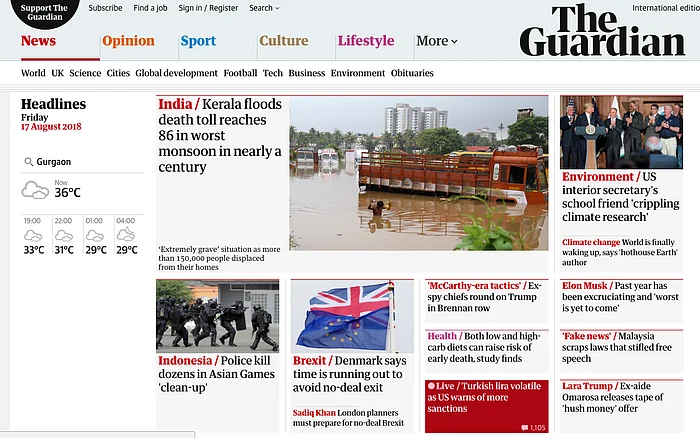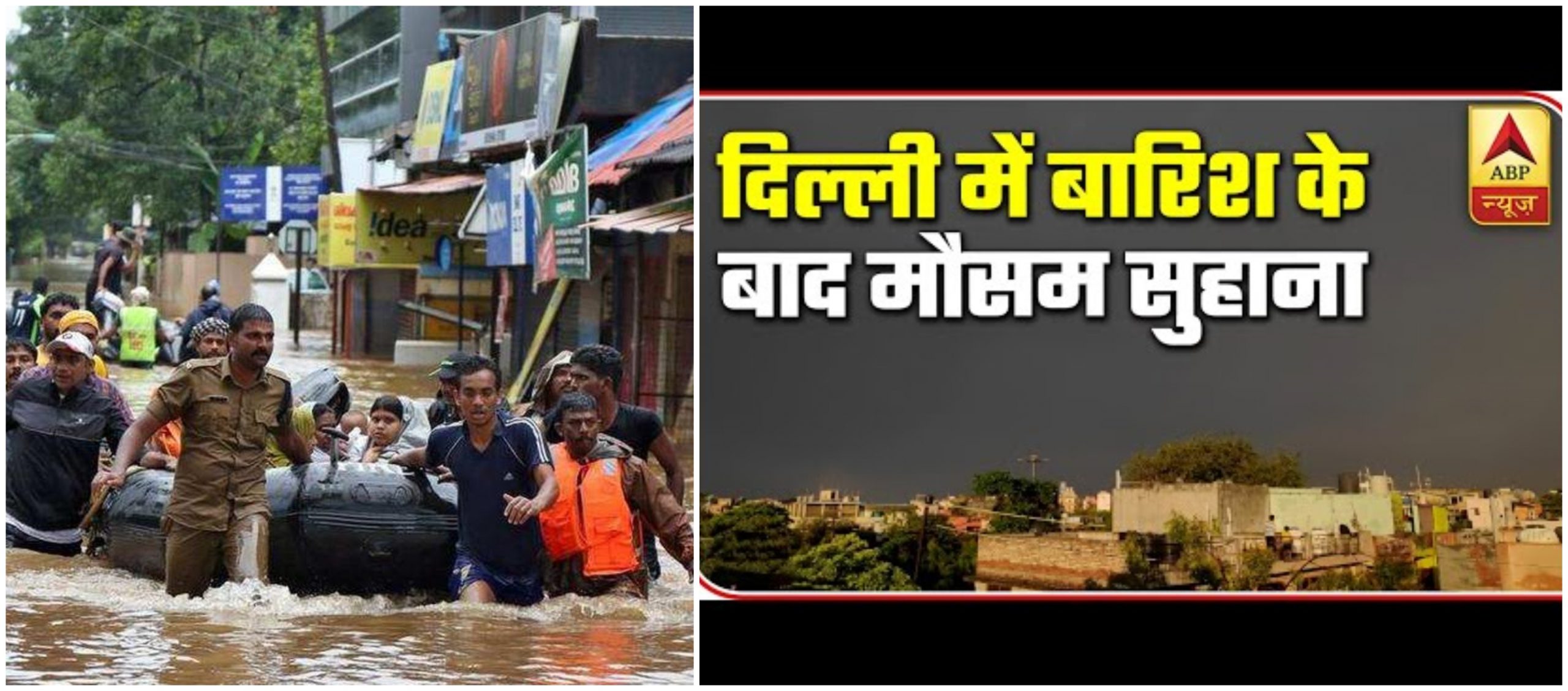The year 2020 has been a significant year in terms of climate activism. With the ‘save Dehing Patkai’ movement and the protest against the new Environment Impact Assessment Draft of 2020 (EIA), a new discourse on environment has come to light—one that has kept local stories and local people out of the purview of climate change and environmental laws. This exclusionary attitude is perhaps more evidently reflected in the Indian media. It continues to blatantly ignore the plight of local population that have long struggled with climate change and disasters. In India, monsoons bring in a lot of apprehensions, more for some regions than others. However, a recurrent problem and one that hasn’t been successfully dealt with is – floods.
Floods continue to create havoc on lives, livelihood, in some instances wiping out entire villages. What can be accounted for a natural disaster, floods are often relegated and assigned a much lower rank in the hierarchy of disasters, such that it has almost always remained limited to providing relief measures and rehabilitation to affected people, after the disaster has caused much distress and loss. This is particularly true of Indian states and cities that do not qualify as ‘important’ urban centers, and therein dealing with floods is left to state authorities and local population. The national media has further pushed these regions to the periphery while adopting a stance of ignorance and indifference.

The national media also seem to have an expiration date in terms of reporting certain news. While the news of celebrity deaths may find a limelight and significant attention over a prolonged period, news of floods and similar disasters are only reported to the point that the fatalities keep spiking. That the states have to reach a particular point of fatality to be worthy of national news is tragic.
Paucity of News of Local Stories
The paucity of news coverage of flooding is an issue that has forever haunted the Indian national media. For states like Bihar, Assam, Kerala, Orissa, the national media has always been a halfwit in covering their affairs and responding to the crisis. One of the factors that might be responsible for this apathy may be the centrist values of the national media which pushes it to report only those forms of climate change or disasters around which a global narrative could be formed. Floods haven’t been a part of this larger narrative, for not all regions share in the plight of this recurring problem.
Further local stories of natural or man-made disasters are never linked to concerns of climate change, and the rift in the discourse of climate change and activism is only growing. This amateurism of the Indian media also points towards a divide that is induced by a western ideology and one which largely keeps cross cultural comparisons out of the discourse.

States Recurrently Affected By Floods
In 2020, torrential rains caused havoc leaving around 14,350,000 people affected across the country. The most affected states were Bihar, Assam and Kerala. Bihar is one of the most flood prone states in India. As of 27th August, 2020, over 86.32 lakh people continue to suffer due to floods in Bihar. Approximately 16 districts of the state have been staggering under the devastation caused by floods this year of which Darbhanga has been the worst hit.

According to the State Disaster Management Department, around 7.71 lakh people have been receiving assistance from community kitchens. Yet, there is a huge dearth of relief and rehabilitation camps for those affected. According to reports only six relief camps have been functional in providing relief and the number of people receiving food from community kitchens has also declined. As of 20th august, 2020, fatality reported remained at 27, but huge numbers continue to be reported ‘undiscovered’.

Kerala for the third consecutive year has been reeling under floods. Apart from flood related toll (22) another 52 people were killed in severe landslides in Munnar. This was followed by the death of 18 people when the Air India Express Flight 1344 carrying 191 people crashed in Kerala due to flooding and lack of visibility. Most of the people who died due to rain related mishaps were reported to be plantation workers.
In 2018, monsoon rains and flooding killed almost 400 people in Kerala and left another 300,00 displaced. This was one of the worst ever floods in Kerala since 1924 and after the havoc of 2015 floods in Chennai. However, what the Indian media was most concerned with during this time was the death of the late Prime Minister Atal Bihari Vajpayee. While this is significant news, a state continuously battling with floods and loss of lives is perhaps an equally important news to be documented. The Indian media never seem to get its priorities straight.
Assam is probably the worst hit state by flooding, and one that continues to be ignored by mainstream media and population alike. This is not the first time that the Indian mainstream media has been ignorant towards the northeast and its issues. According to the Assam State Disaster Management Report, number of people affected by flooding reached a total of 56,89,584 as of May while number of lives lost stands at 123 across 30 districts of Assam.
Assam is probably the worst hit state by flooding, and one that continues to be ignored by mainstream media and population alike. This is not the first time that the Indian mainstream media has been ignorant towards the northeast and its issues. According to the Assam State Disaster Management Report, number of people affected by flooding reached a total of 56,89,584 as of May while number of lives lost stands at 123 across 30 districts of Assam. Around 564 relief camps and distribution centers have been set up. The floods have further claimed the lives of 127 animals. Kaziranga National Park and Tiger Reserve remain submerged under floods leading to death of animals of different species including the one horned rhino. The state every year faces the brunt of monsoon rains accompanied by heavy landslides. Yet, its news has never made it the national media.
The past two years (2018 and 2019) have been the worst with loss of wildlife, human lives and property. Accompanying the floods in Assam in 2020 was another major disaster – the Baghjan oil and gas spill. On June 9, 2020 an oil drilling site in Baghjan in upper-Assam exploded in flames resulting from a gas leak. With the catastrophe that followed, one of the most important biodiversity hotspots was affected and the displacement caused is unparalleled. Together with the pandemic, the face of Assam has been one of unprecedented fear and despair.
A Common Experience – Of Indifference and Neglect
Across all these regions and others including Gujarat, Chhattisgarh, Uttarakhand who have been chronically hit by the ravages of flood, a common experience is that of being neglected by both the Centre and the national media. Floods not only bring displacement and loss of lives but creates an irreversible effect, the recovery from which takes a long time and a lot of resources.
While the news of these flood affected regions do not make it to the headlines, the coverage of flash floods in the major urban centers are widely reported. The national dailies including The Hindu aggressively reported on the artificial floods in Mumbai and Delhi while describing how a tree fell apart during incessant rains in the former and parts of Gurgaon submerged in the latter, disrupting everyday lives of the people.
Problems in Reporting
In so far as the national media reports on floods in local areas or certain parts of the country (north eastern and Southern), the concerns do not go beyond reportage of specific numbers in terms of areas affected and loss of lives. The national media also seem to have an expiration date in terms of reporting certain news. While the news of celebrity deaths may find a limelight and significant attention over a prolonged period, news of floods and similar disasters are only reported when the fatalities keep spiking. That the states have to reach a particular point of fatality to be worthy of national news, is tragic.
One of the worst affected groups among these flood victims are women and children. In most accounts of relief camps, issues of sanitation remain a major problem. For people displaced by floods, local schools are converted into shelters and rehabilitation camps. They often share a common bathroom (men and women alike) which further puts the health of these people at risk not to mention people with disabilities and other illness, for whom life in relief camps is a horror story altogether. Lack of sanitary pads and issues of disposal are one of the most neglected realms of relief camps. The media seldom goes into details of relief and rehabilitation let alone assess the plight of those inside the camps. The avenues to engage in dialogue with the affected people is neither an option nor a consideration by mainstream media.
Lack of sanitary pads and issues of disposal are one of the most neglected realms of relief camps. The media seldom goes into details of relief and rehabilitation let alone assess the plight of those inside the camps. The avenues to engage in dialogue with the affected people is neither an option nor a consideration by mainstream media.
Stories That Do Not ‘Sell’
The details of such news relating to calamities are insignificant for they are not able to attract TRPs. The national media cannot sell these stories as much as they are able to capitalise on highly politicised news or celebrity deaths. The boundaries between what may be considered ‘news’ and non-news’, itself has to be revaluated for the media. The media today has come to be defined more in terms of its ability to twist scandalous stories into news than presenting facts.

Another problem also lies in terms of the control over media houses. For news, related to flooding and calamities only bring to light the failure of the Centre and authorities in dealing successfully with a recurrent issue and their lack of compensation. Thus, news media houses keep such details hush-hush with only occasional mentions.
Social Media and Efforts of NGOs
Where the mainstream media has failed miserably, social media has emerged as a significant platform for dissemination of news and wider outreach of the status of flood affected victims. People affected by the floods have time and again took to social media to themselves report on their predicament and request help from the public. Various NGOs have started campaigns while working on ground with relief workers in continuously reporting about, and helping flood victims. What should have been the responsibility of the media is continually fulfilled by civil societies, local organisations that have taken upon the responsibility of documentation and relief as a result of lack of support from other sources.
The ongoing crisis is one that cannot be tackled single handedly by the local and state authorities. Now more than ever, these regions are in need of help, especially in the face of COVID-19. While rains may have ceased, the plight of the victims continue to worsen and the road to recovery a long and tenacious one.

Below are linked some NGOs that have been actively working to provide relief to flood affected victims. If you wish to donate please tap on the links below or call on the numbers provided.
- CM Flood Relief Fund (Bihar)
- Action Aid for Bihar flood relief
- HelpAge India
- CM Flood Relief Fund (Assam)
- Flood Relief (Assam)
- Kerala CM Relief Fund
References:
About the author(s)
A Sociology graduate with an interest in art and music. An enthusiastic reader especially concerning gender dynamics in mythological stories. A cat mom and an occasional photographer often found cafe hopping in Delhi.




